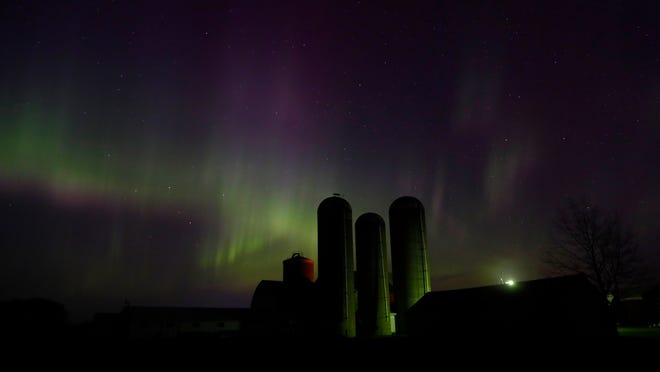Why forecast shows a view is unlikely | CPT PPP Coverage
Cryptopolytech (CPT) Public Press Pass (PPP)
News of the Day COVERAGE
200000048 – World Newser
•| #World |•| #Online |•| #Media |•| #Outlet |
View more Headlines & Breaking News here, as covered by cryptopolytech.com
Why forecast shows a view is unlikely appeared on www.northjersey.com by Bruce A. Scruton.
Rain clouds over the Northeast will keep earthlings from getting much of a view of a rate “northern lights” show on Thursday night in New Jersey.
The light show, known more formally as the aurora borealis, is common in northern latitudes in Canada, but with increased activity on the sun shooting out bursts of charged particles at a higher than normal rate, the dancing lights in the northern sky could be seen as far south as the 35th latitude. Northwestern New Jersey is at the 41st latitude.
The best time to see the aurora borealis is usually between 10 p.m. and 2 a.m. local time.
A place with higher elevation and less light pollution will help your chances of seeing it, but there’s also rain in the forecast for Thursday.
In semi-scientific terms, the particles from the sun react with the magnetic field of the earth . That interaction causes the particles to glow. That happens almost all the time, but in cycles of high sun activity, there are many more particles streaming away from the sun. That wealth of particles causes the interaction to move farther from the poles.
Story continues after gallery
The “southern lights,” known as aurora australis, are visible from the most southern areas of New Zealand and Australia, but don’t reach as far north as South America and Africa.
In areas of Canada and Russia, as well as Antartica, the “lights” are a common occurrence. However, as activity on the sun’s surface, which runs in 11-year cycles, increases, the stream of particles from the sun increase, creating more activity around the poles and pushing the glow further from the poles toward the mid-latitudes.
Along with that 11-year peak of solar storms, the sun also turns on its own axis, pointing those particle-emitting storms at the Earth on a 27-earth-day cycle. This 11-year peak of solar storms will come in 2025.
Outdoors:Get some fresh air, explore nature and avoid germy crowds at these NJ hiking spots
Although the clouds will obscure the colorful light show, the particle storm will have an effect on communications, navigation and even the electric power grid.
Scientists note that GPS navigation may be affected by the radiation in the particles and high-frequency radio transmissions.
Because of those affects on communications, the National Weather Service has a “Space Weather Prediction Center” which uses ground-based observations as well as earth-orbiting and deep space satellites to monitor sun activity,
That site, www.swpc.noaa.gov, has graphics which show the progression of the aurora, as well as other pages on effects of solar activity on human activity here on Earth.
FEATURED ‘News of the Day’, as reported by public domain newswires.
View ALL Headlines & Breaking News here.
Source Information (if available)
This article originally appeared on www.northjersey.com by Bruce A. Scruton – sharing via newswires in the public domain, repeatedly. News articles have become eerily similar to manufacturer descriptions.
We will happily entertain any content removal requests, simply reach out to us. In the interim, please perform due diligence and place any content you deem “privileged” behind a subscription and/or paywall.
CPT (CryptoPolyTech) PPP (Public Press Pass) Coverage features stories and headlines you may not otherwise see due to the manipulation of mass media.
First to share? If share image does not populate, please close the share box & re-open or reload page to load the image, Thanks!




